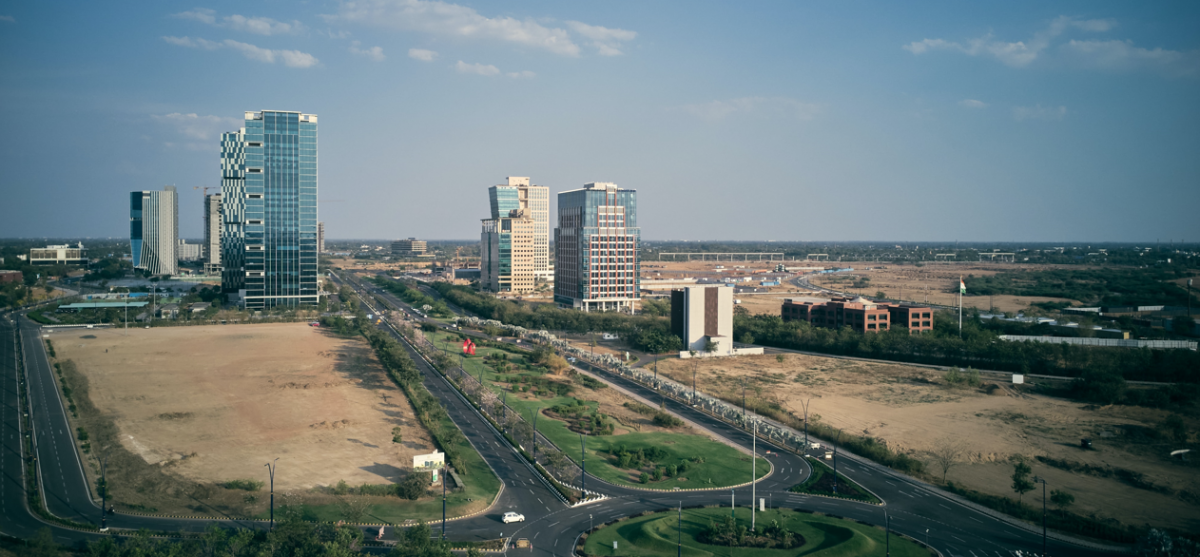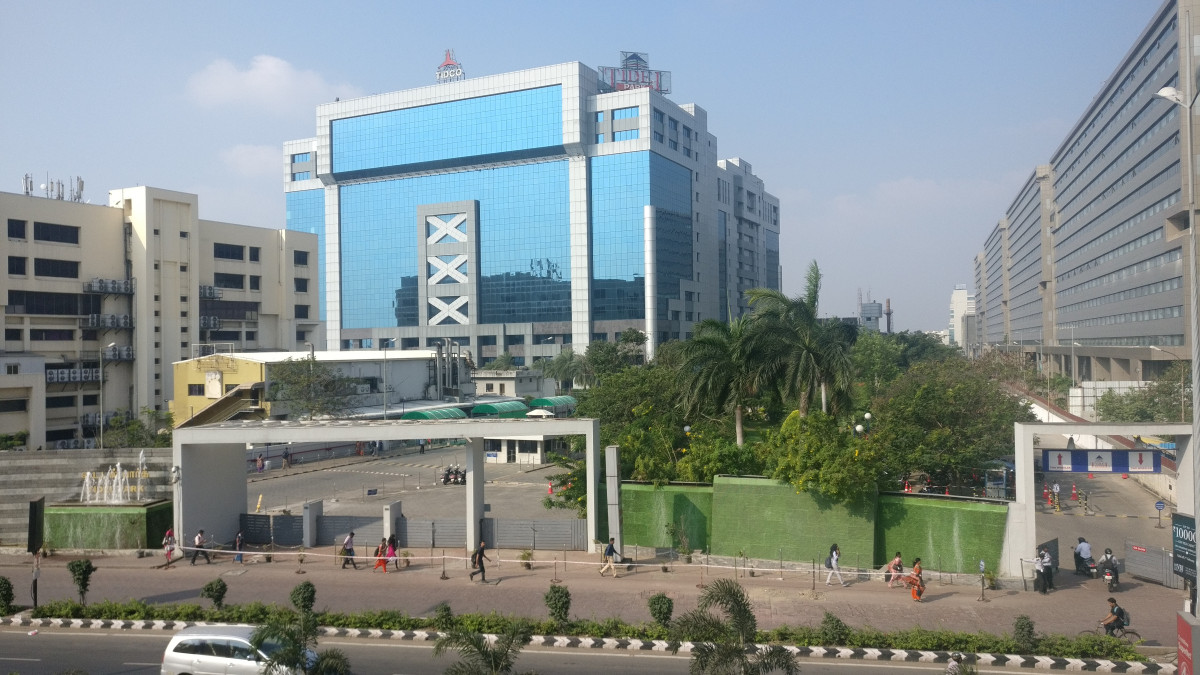
The current economic slowdown that India is experiencing, and the chronic joblessness its youth is suffering from, make the quest for an economic model more pressing than ever. The trajectory of Gujarat has been presented by Narendra Modi as a “model” when he was at the helm of the state between 2001 and 2014, especially during the 2014 election campaign. However, Tamil Nadu is today projected as a symbol of an alternative “Dravidian model”. How do both compare?
Richer than an average state, but more or less egalitarian
In terms of growth rate, Gujarat and Tamil Nadu, at about 8 % in 2023-24, were neck and neck. In terms of per capita too, at respectively Rs 1.8 and 1.6 lakh, which made it richer than most of the other Indian states. But one needs to disaggregate these data and look at the level of inequality for complexifying the comparison.
If we refer to World Bank criteria, in 2023 the proportion of people living below the poverty line (Rs 1,059.42 per month in rural areas and Rs 1,286 per month in urban areas) in our two states was, respectively, 5.8% in Tamil Nadu and 21.8% in Gujarat. Similarly, in 2022-23, the monthly per capita consumption expenditure of Gujarat was at Rs 6,621, far from what it was in Tamil Nadu, Rs 7,630.

Illustration: Pariplab Chakraborty.
Poverty levels are partly a function of wage levels. In 2022-23, the average daily wage for men working in rural areas as “non-agricultural labourers” was much higher, at Rs 481.50, in Tamil Nadu than in Gujarat (Rs 273.10) – a figure that is the lowest in India, Madhya Pradesh excepted. This pattern is largely repeated for agricultural labourers, who are paid Rs 470 in Tamil Nadu, but only Rs 241.9 in Gujarat – only Madhya Pradesh, again, does worse, at Rs 229.
This data is corroborated by the daily wages paid to construction workers in rural areas. In 2022-23, this income was over Rs 500.90 in Tamil Nadu, against Rs 323.20 in Gujarat .
This contrast reflects different levels of education.
In terms of literacy rates, Tamil Nadu (at 85.5%) does not do much better than Gujarat (84.6%), but, as per the All India Survey on Higher Education (AISHE, 2020-21) the gross enrolment ratios (GER) in Tamil Nadu is much higher than in Gujarat, as evident from the fact that Tamil Nadu has 13.4% graduates, and Gujarat only 8.9%.
These figures reflect a surprisingly high drop-out rate in Gujarat. While the GER was 98.3 in 2021-22 for children in upper elementary school in Tamil Nadu and remained at 81.5 by the end of higher secondary, in Gujarat these GER ratios dropped from 91.1 to 48.2 (well below the national averages of 94.7 and 57.6).
The language of instruction matters a lot too. In 2017-18, the National Sample Survey looked at the language of instruction in elementary school in its household questionnaire survey; 91% of the parents interviewed in Tamil Nadu – a record – said that their child(ren) received education in English at elementary school, against 27% in Gujarat.
The health situation can be measured in many different ways. The infant mortality rate of Tamil Nadu, 13/1000, is much lower than in Gujarat (23/1000). It should be noted that Tamil Nadu divided its infant mortality rate by 3.1 between 2004 and 2020, compared to 2.3 for Gujarat.
Gujarat is clearly a success story in terms of growth, but the wealth that has been generated has been captured by a minority, mass poverty remaining prevalent, whereas Tamil Nadu’s society is less unequal, and benefits from a similar growth rate. These diverging trajectories can be explained in many different ways.
Policies matter
Certainly, the societal and historical background of both states matter: while Gujarat has traditionally benefited from the key role played by merchant castes in this trade-oriented part of India, Tamil Nadu has capitalised on the egalitarian ethos of the architects of the Dravidian movements, the low caste leaders locals who emancipated themselves from the Brahmanical elite by arguing that they were the sons of the soil, whereas the upper castes were presented as Aryan invaders. But policies play a major role too. While Gujarat invested in infrastructure, Tamil Nadu developed social policies.
Public health policy is a case in point. Gujarat, though wealthy, lags behind Tamil Nadu: its healthcare expenditure grew by only 10.5% between 2012-13 and 2019-20, compared to 20.5% in Tamil Nadu, where this expenditure is more than 25% higher than in Gujarat. As a result, in 2018, the number of public hospital beds per million inhabitants was over 1,000 in Tamil Nadu, while Gujarat was below Madhya Pradesh, again, with 316 public hospital beds per million inhabitants.
Some of the differences in the education domain that we have highlighted above also reflect contrasting policies, the symbol of which is the “free midday meal”, which strongly encourages parents to send their children to school. In 2017-18, Tamil Nadu, a pioneering state in this field, served a “free midday meal” in 85.4% of secondary schools. By contrast, in Gujarat “free midday meal” was served in only 11% of the schools.
While Tamil Nadu has invested in human resources (education and health in particular), Gujarat has focused on infrastructure (energy and transport). This explains why the state has a power generation capacity of 45,913 megawatts, compared with 37,514 for Tamil Nadu (and only 7555 for Bihar). As a result, per capita electricity supply stands at 2,288.3 kilowatt-hours in Gujarat and 1,588.7 in Tamil Nadu. Indeed, Gujarat has equipped itself with thermal plants, solar panels and wind turbines to such an extent that its electricity production reached 13,792 billion net crore megawatts in 2022-23, compared with 11,472 in Tamil Nadu, and was therefore behind only one state, Maharashtra. In terms of installed power generation capacity, Gujarat is also at the forefront, with 45,913 megawatts, compared with 37,514 in Tamil Nadu, making it India’s number one. In terms of road network, by 2022 Gujarat would have 7,885 km of national highways and 16,746 km of state highways, compared with 6,858 and 11,169 in Tamil Nadu.
In parallel, under Modi, Gujarat has promoted mega projects. The Gujarat Special Investment Region Act was passed in order ‘to come up with a legal framework to enable the development of mega investment regions and industrial areas in the state’. Its ultimate aim was to create ‘global hubs of economic activity supported by world class infrastructure’. The Act was the mainstay of the 2009 Industrial Policy, which was explicitly designed for ‘making Gujarat the most attractive investment destination not only in India but also in the world’. It targeted not only ‘prestigious units’ (above Rs 3 billion, or $37.5 million), but even more so ‘mega projects’, which denoted more than Rs 10 billion ($125 million) of project investment and direct employment of only 2,000 people – hence a ratio of Rs 500,000 ($6,250) per job, a clear sign of capital intensity, note Indira Hirway, Neha Shah and Rajeev Sharma, in their 2014 book Growth or Development: Which Way Is Gujarat Going?. To attract big companies, access to land was considered a key element in 2009. The Gujarat Industrial Development Corporation (GIDC) therefore started to acquire land to sell to industrialists, in some cases on a 99-year lease, or in Special Economic Zones.
The big companies which benefited the most from this policy, Reliance, the Adani Group, Tata, Essar etc., developed highly capitalistic production sites, including, the largest refineries of the country, which are in Gujarat. By contrast, Tamil Nadu continues to promote SMEs – something Gujarat was traditionally famous for till the late 20th century. According to the RBI, it has 38,837 companies, 10,000 more than Gujarat – 28,479 to be precise – for a similar population and GSDP.
Although Gujarat has almost 25% fewer factories than Tamil Nadu, its industrial output accounts for 18% of the Indian total, whereas Tamil Nadu accounts for only 10%. These figures reflect a very different economic structure. While Tamil Nadu’s industrial fabric remains dominated by SMEs (sometimes of considerable size), Gujarat is the realm of large, highly capital-intensive companies specialising in the energy and petrochemical sectors.
In 2015-16, Tamil Nadu had 4.95 million SMEs, compared with 3.32 million in Gujarat. Even these SMEs were highly capital-intensive: in 2006-07, they had already invested Rs 1746.73 billion, compared with Rs 815.64 billion for those in Tamil Nadu (and only Rs 88.23 billion for those in Bihar). By contrast, SMEs in Tamil Nadu are far more “labour intensive”: in 2015-16 they employed 9.67 million people, compared with just 6.12 million in Gujarat (and little more than 5.31 million in Bihar). Fixed capital invested in Gujarat was twice as high as in Tamil Nadu in 2011-12 according to the above figures. The capital intensity of Gujarat’s production base is such that the state had just 1,589,730 factory workers in 2019-20, compared with 2,209,217 in Tamil Nadu (and just 108,416 in Bihar).

GIFT City in Gujarat. Photo: Unsplash
Gujarat’s ability to attract large-scale capital investments has been bolstered by favourable policies from the Union government and targeted initiatives like GIFT City, which position the state as a hub for high-value financial and industrial activities. These concerted efforts often include tax incentives, infrastructure subsidies, and regulatory advantages that amplify Gujarat’s attractiveness for big capital, further entrenching its industrial dominance. However, such preferential treatment has sparked criticism and heightened friction between the Union government and southern states, including Tamil Nadu.
Tamil Nadu and Gujarat do not only diverge from the point of view of their industrial trajectories, but their service sectors are also not comparable.
Gujarat has maintained a relatively low service sector contribution to its GSDP, consistently hovering around 30-33%. Still, the service sector GVA in Gujarat grew from Rs 2,092.14 billion in 2011-12 to Rs 4,509.03 billion in 2022-23, indicating some robust growth. Financial services have experienced the most spectacular growth in Gujarat, especially after the creation of the Gujarat International Finance Tec-City in 2015. In 2020, GIFT City’s International Financial Services Centre bagged 10th place in the Global Financial Centres Index. The rise of GIFT city is largely due to the transfer of some of the financial activities which were based in Mumbai so far. While in 2011-12, the financial service sector of Gujarat represented 72% of the revenue of the service sector, this share rose to 87% in 2022-23.
By contrast, the service sector Gross Value Added in Tamil Nadu increased from Rs 3,612.27 billion in 2011-12 to Rs 7,447.96 billion in 2023-24, more than doubling over the period. The state’s consistent investment in education and human resources has played a key role in fostering this growth, but in a direction different from the one followed by Gujarat. Tamil Nadu’s stable service sector share, despite rapid overall GSDP growth, points to a sustainable and diversified economic model that reduces dependency on any single sector.

Tidel park and Ramanujan IT city in Chennai. Photo: Shanmugamp7, CC BY-SA 4.0 via Wikimedia Commons
If Gujarat is making progress in the domain of the financial service sector, it remains weak in the IT sector, largely because it lacks the skilled manpower due to the absence of a proper university system and a widespread fluency in English. By contrast, Tamil Nadu is implementing a very voluntarist IT policy on the basis of a complete ecosystem: not only the state has developed very sophisticated training centres but also IT parks. TIDEL Park, inaugurated in 2000 at Chennai is one of the largest IT parks in Asia. It explains that the city is the third largest software exporter in India after Bengaluru and Hyderabad. About 800,000 people work in the IT sector in Tamil Nadu – without mentioning the indirect jobs created by the formal IT sector. Interestingly, even Gautam Adani, the Gujarati oligarchs in chief of Modi’s India, is investing massively in the IT sector of Tamil Nadu and the state is becoming a hub of Artificial Intelligence.
If Gujarat and Tamil Nadu are equally rich, the distribution of wealth is less inegalitarian in the latter than in the former and while industry prospered in both states, it is more labour intensive in Tamil Nadu, where the service sector is also rising more quickly. The diverging trajectories of the two states reflect not only different societal and political approach but also contrasted policies. Whether Gujarat can still appear as the best model for India is particularly debatable when Tamil Nadu offers such an alternative route.
This op-ed summarises the argument made by the author, with the help of Vignesh Rajahmani and Neal Bharadwaj in a detailed note published by the Montaigne Institut.
Christophe Jaffrelot is research director at CERI-Sciences Po/CNRS, Professor of Politics and Sociology at King’s College London and Non-Resident Fellow at the Carnegie Endowment for International Peace. His publications include Modi’s India: Hindu Nationalism and the Rise of Ethnic Democracy, Princeton University Press, 2021, and Gujarat under Modi: Laboratory of Today’s India, Hurst, 2024, both of which are published in India by Westland.




